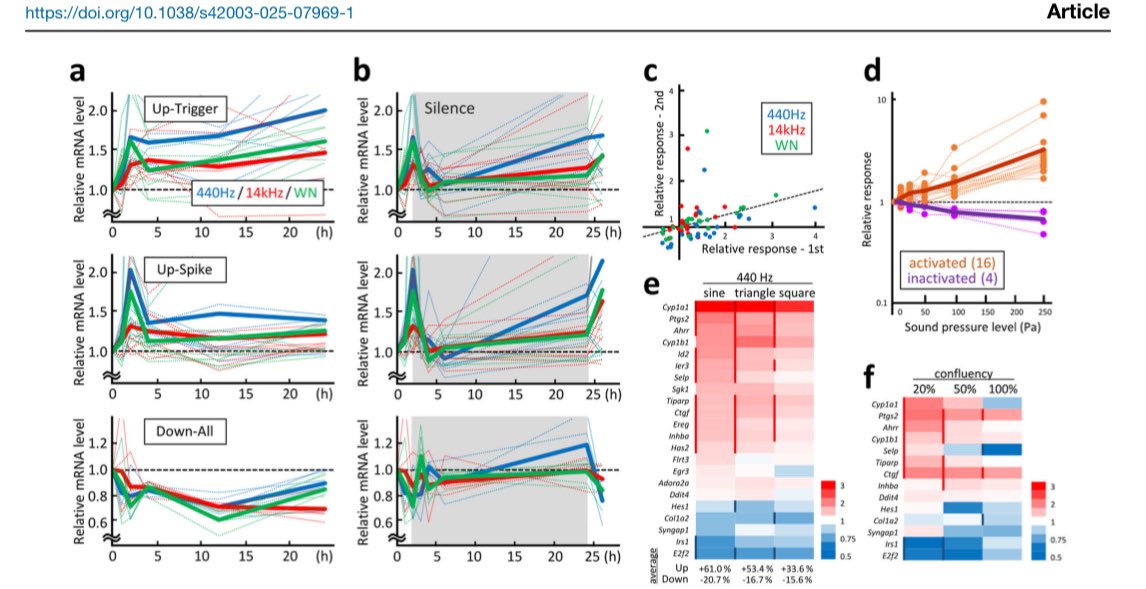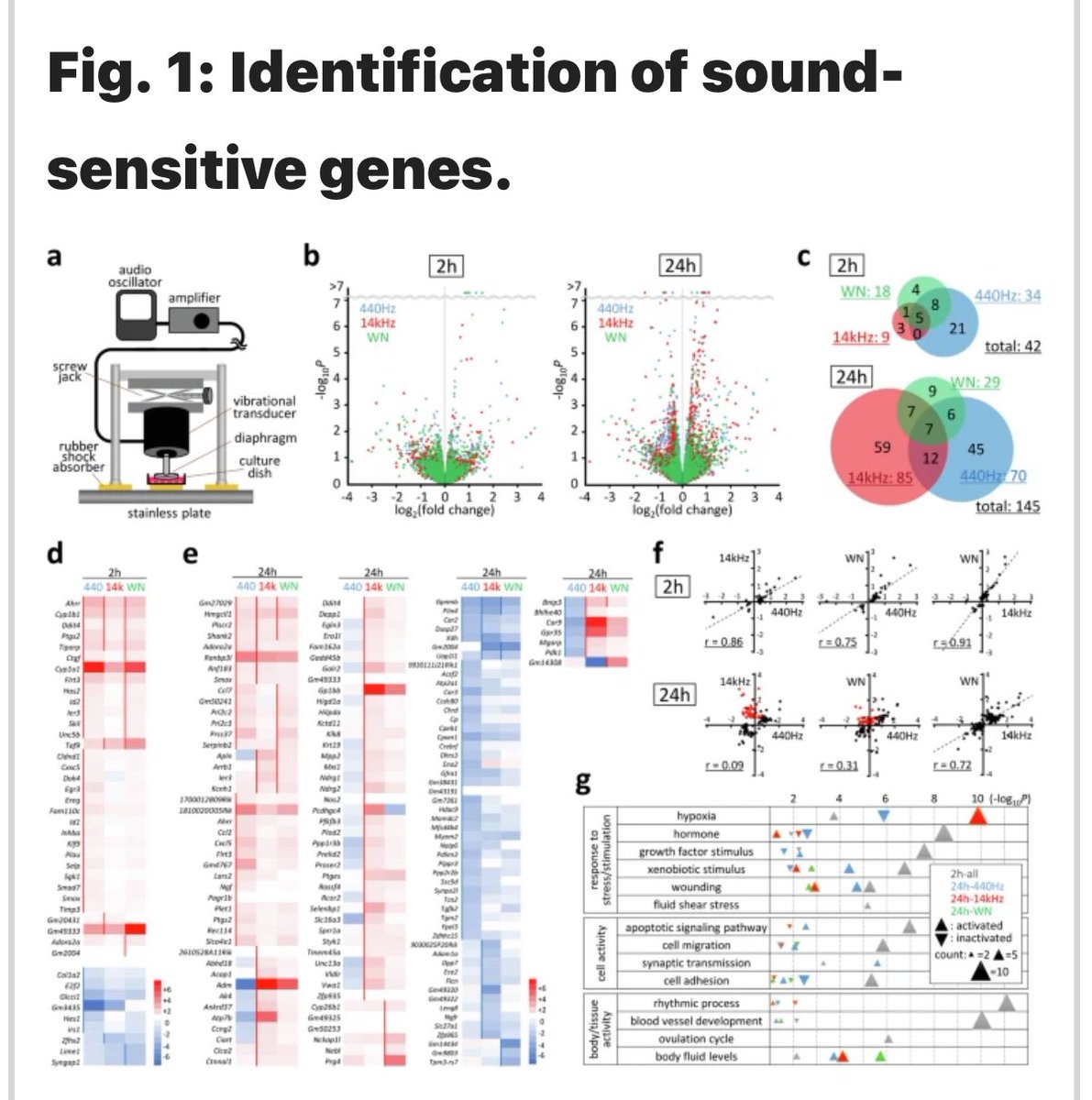Ozempic(GPL-1 藥物)與聲調製。
由您選擇。
~~
正如 2025 年京都大學研究中描述的脂肪細胞的聲學調節,以及 GLP-1 受體激動劑 Ozempic(索馬魯肽)都旨在解決肥胖問題,但在機制、應用和發育階段方面存在顯著差異。
聲波方法通過機械轉導和 Ptgs2 介導的途徑在體外無創地抑制脂肪細胞分化高達 15%,提供了一種潛在的無藥物、副作用最小的療法,儘管它仍處於早期研究中,體內療效未經證實。
相比之下,FDA 批准的注射藥物 Ozempic 通過模仿 GLP-1、降低食慾和減緩胃排空來促進減肥,在臨床試驗中實現了 15-20% 的體重減輕。然而,它存在噁心、胰腺炎和長期依賴等風險。
雖然 Ozempic 是一種經過驗證的全身治療,但聲學療法是非侵入性的,並且與 Ozempic 的影響相匹配。

Sonic BOOM!!
Soundwaves help you lose weight with no injections no drugs!
~~
A groundbreaking study published in Communications Biology on April 19, 2025, by researchers at Kyoto University, led by Masahiro Kumeta, has revealed that audible sound waves can influence cellular behavior, specifically suppressing fat cell (adipocyte) differentiation by modulating gene expression.
Titled “Acoustic modulation of mechanosensitive genes and adipocyte differentiation,” the study demonstrates how sound, as a non-invasive mechanical stimulus, can alter cellular processes, opening potential avenues for applications in biotechnology and obesity management.
Background and Motivation
Cells are known to respond to mechanical stimuli through mechanotransduction, a process where physical forces are converted into biochemical signals.
While previous research has explored high-intensity ultrasound or low-vibration stimuli, the effects of audible sound waves (20 Hz to 20 kHz, within the human hearing range) on cellular behavior have been underexplored due to challenges in isolating sound’s effects from confounding factors like heat or vibrations.
Kumeta’s team built on their 2018 findings, which showed audible sound could modulate mechanosensitive genes, but sought to refine the experimental setup to directly attribute changes to acoustic waves and investigate their impact on fat cell development.
The researchers designed a precise sound emission system to deliver controlled acoustic waves to cultured cells, minimizing extraneous effects. The setup involved:
•Vibration Transducer: A digital audio player connected to an amplifier sent sound signals to an upside-down vibration transducer mounted on a shelf. This transducer transmitted acoustic waves through a diaphragm to a cell culture dish, simulating physiological sound levels (approximately 100 Pa, comparable to loud conversational or musical sound).
•Sound Patterns: Three sound types were tested: a 440 Hz sine wave (equivalent to the musical note A), a 14 kHz high-frequency tone, and white noise (random broadband sound). These were applied continuously for 2 or 24 hours or in specific schedules for differentiation experiments.
•Cell Types: The study primarily used murine C2C12 myoblasts (muscle precursor cells) for gene expression analysis and 3T3-L1 preadipocytes (fat cell precursors) for adipocyte differentiation studies.
•Analysis Techniques: RNA sequencing identified differentially expressed genes, while microscopy and biochemical assays assessed cellular morphology, differentiation, and molecular pathways. Specific focus was placed on the gene Ptgs2 (prostaglandin-endoperoxide synthase 2, also known as Cox-2) due to its robust response to sound.
The experiments were conducted with controls to ensure sound-specific effects, such as maintaining consistent temperature and minimizing vibrational artifacts.
For adipocyte differentiation, 3T3-L1 cells were exposed to sound during the initial three-day induction phase with a differentiation medium containing methylisobutylxanthine, dexamethasone, and insulin (MDI), followed by four days in insulin-only medium.
The findings have profound implications for both fundamental biology and clinical applications:
•Non-Invasive Therapies: Since sound is non-material, acoustic stimulation offers a safe, immediate, and non-invasive method to modulate cellular behavior. The study suggests potential for sound-based therapies to manage obesity by inhibiting fat cell formation without drugs or surgery.
•Medical Applications: Beyond obesity, acoustic modulation could guide stem cell differentiation, promote tissue healing, or regulate inflammation, given Ptgs2’s role in these processes. The non-invasive nature of sound makes it appealing for clinical settings, potentially delivered via wearable devices.
Link:

6.47萬
165
本頁面內容由第三方提供。除非另有說明,OKX 不是所引用文章的作者,也不對此類材料主張任何版權。該內容僅供參考,並不代表 OKX 觀點,不作為任何形式的認可,也不應被視為投資建議或購買或出售數字資產的招攬。在使用生成式人工智能提供摘要或其他信息的情況下,此類人工智能生成的內容可能不準確或不一致。請閱讀鏈接文章,瞭解更多詳情和信息。OKX 不對第三方網站上的內容負責。包含穩定幣、NFTs 等在內的數字資產涉及較高程度的風險,其價值可能會產生較大波動。請根據自身財務狀況,仔細考慮交易或持有數字資產是否適合您。

